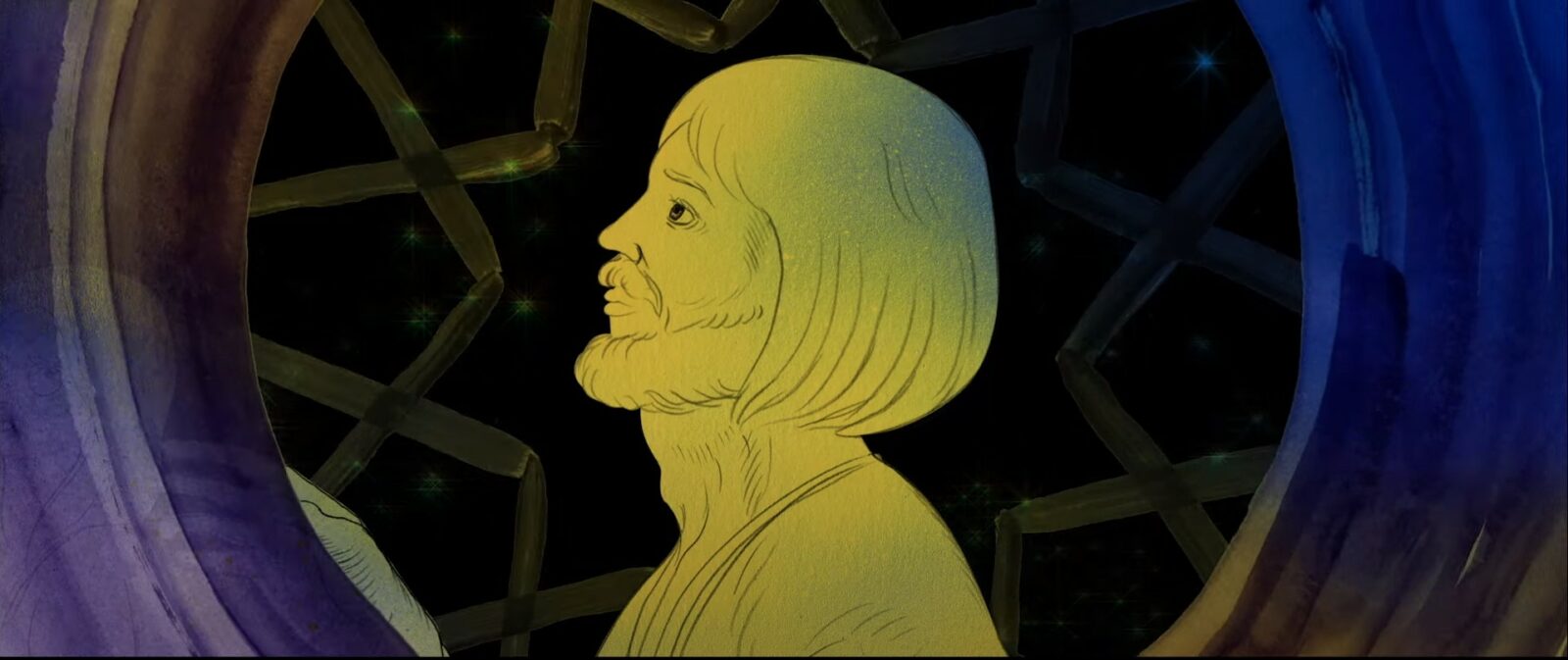Cryptozoo was screened on June 18th as a part of Provincetown International Film Festival 2021.
Adult comics artist Dash Shaw and his wife Jane Samborski acting as producer have created an animated feature that defies conventions of the medium in every way that it can mean. Cryptozoo is a gory, fantastical, altruistic indie film that functions as an homage to the bedrock of animation as a medium and the unconventional designs found in 1960s pop art and surrealism.
The husband-wife team noted animation keyframe pioneer Winsor McKay (Gertie the Dinosaur, Little Nemo) and his lost animated short, The Centaurs (1921) as the inspiration for their latest animated feature film. Just as McKay’s short film does, Cryptozoo imagines a sultry, violent world where cryptids exist in reality and are misfits in a society that pretends they don’t truly exist at best, and hunt them down for sport and weaponization at worst, encapsulated in a hybrid of fantastical animation and realistic worlds. These animals are among the deities and modern myths of cultures across the globe and across history: Kraken, gorgons, jersey devils, and unicorns are abound throughout the imaginative world of the film, and a wealthy investor develops a sanctuary for them in San Francisco to shelter the creatures from the outside world. The film’s main character Lauren (Lake Bell) is a cryptozookeeper that is searching for the Japanese dream-eating creature, the Baku before other hunters employed by the US military can seize it and use its abilities as a bioweapon as the nation enters the tumultuous Vietnam War.
Cryptozoo wears its love of 1960s arts and counterculture on its sleeves, and this is clearly evident in its animation style. From the first shots of the film, Shaw’s direction emulates features of the era such as films like Fantastic Planet and The Beatles’ Yellow Submarine, and painting styles that recall the surreal pop art works of Tom Masse, Ly Gregonier, Peter Maxx, and even Jack Kirby’s X-Men comics. Every frame is painted, drawn, and collaged by hand. The hand-drawn nature of the film will be recognizable to folks who lived through the era, or viewers who study animation. In production, Shaw admirably tried to treat the film’s animation process as “casting” artists based on their specialized mediums that he admired. The result is a movie that expresses adept filmic technique through many artists’ renditions together in one feature film, but also has disparate styles and quality between seconds of film. Some backgrounds are stunning watercolor, others are beautiful gradients of painted acrylic and some parallax backgrounds and interiors are drawn like a child’s work with crayon on sheet paper. Both human and cryptid characters’ appearances are equally anatomical and exaggerated, with minimal movement and superimposed on backgrounds like paper dolls. Due to lack of refinement in illustration and perspective, it can be jarring to watch in the first few scenes, but with direct reference to both Shaw’s own illustrated work and the animation of the era which inspired it, Cryptozoo’s animation thrives on embodying its counterculture, even so far as to reject the fundamentals of animation established by Walt Disney Studios that are the foundation of every 2-D animated work to this day.
The film tries to criticize corporate entities like Disney in its text as well, painting itself as the hypothetical of what Jurassic Park would have looked like if it was written for the Woodstock generation. However, the screenplay is where the film lacks conviction in its dedication to the counterculture. While it tries to balance massive themes like anti-war protest, animal activism, and supporting the LGBTQIA+ community, it messily mashes them all together with the film’s creatures as the stand-ins for all of these themes. It only barely musters to articulate that perhaps it isn’t the place of people with established wealth in our society to lord over as sole protectors of society’s oppressed. The film’s back half instead leans into the tropes of the blockbuster films it wants to subvert, vibing more like Jurassic World in a myriad of destructive action sequences and indulging in showcasing all the fantastic creatures tearing up the antagonists once liberated from their captivity.
“Trippy throwback” is an unsatisfactory way to describe what Cryptozoo is shooting for when you delve deeper under its skin. Its artistic merits are too genuine for that summation. However, its ability to execute the hippie, punk-rock fundamentals against the establishment fall through as its visual style lacks the homogenous marriage between its artists and the indulgence for tropes to tie its screenplay together. Despite these faults, the film aims so high only to just narrowly miss its goals. The final product comes across more like a fluffy cross between a Wes Anderson animated feature and an over-indulgent late-night Adult Swim special. That’s not necessarily a net negative, but it doesn’t feel like the piece of pop-art, pulp fiction for activism that it was trying to be.
The film will release on streaming services on August 20th, 2021.
Advertisement
Advertisement
